Mark’s Notebook - Page 23
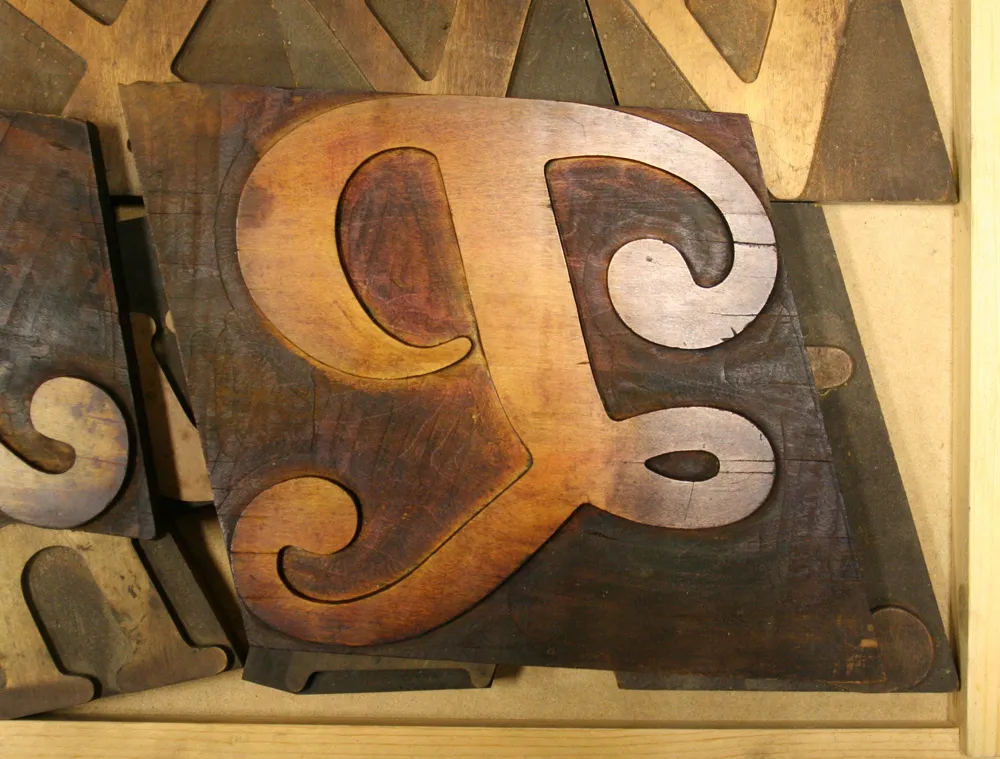
Large (about 6 inches tall) wood type “P”, seen at the Hamilton Wood Type & Printing Museum, Two Rivers, Wisconsin, on March 31, 2009.
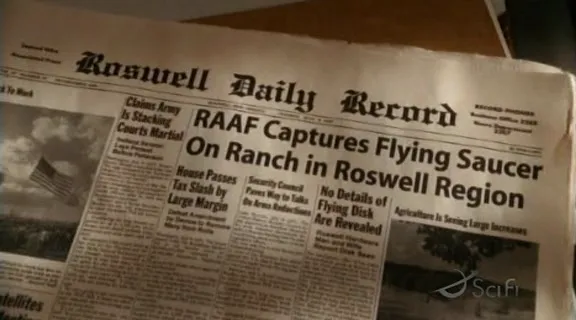
Reader Ivan Philipov sent me this still from Steven Spielberg’s 2002 science fiction television series “Taken”. The newspaper is supposed to be from 1947, but the headline font, Adobe Myriad, didn’t exist until 1992.
Last Friday, I spent the afternoon frantically trading files with Peter Bruhn (of Fountain type foundry in Sweden) for an exhibition match of Layer Tennis. The basic idea is to pass a layered Photoshop file back and forth for ten “volleys”, about one every 15 minutes. The resulting “volley” image is displayed live for the world to see, with running commentary (in this case by the witty and capable Grant Hutchinson.
What may not have been obvious to some was that the Photoshop compositions were not where Peter and I were spending most of our time (well, maybe in some cases it was obvious). In fact, we were designing, building and generating fonts in FontLab, and then using them in Photoshop. With most of the volleys, we started from the font that had been built in the previous one.
Although the images created in Photoshop were the ultimate public face of the match, I thought it might be interesting to show what was going on behind the scenes with the fonts.
To make it easier to tell what was going on, I’ve color-coded the glyphs:
- Green = new glyphs
- Purple = modified glyphs
- Gray = unmodified glyphs.
Volley 1: “jam” I got the coin toss, so I went first. I created a font with three simple glyphs in a sort of bloopy geometric style.

Volley 2: “your ham” Peter followed up by ably adding several more glyphs in the same style.

Volley 3: “more homey” I modified all the existing glyphs to create a higher-contrast semi-serif design. (You can see more clearly in this version that the basic construction is that of an upright italic.)

Volley 4: “möre” Peter takes it in a different direction, more like a Bodoni or Didot, and adds a whimsical swash and umlaut. He also takes advantage of the fact that he only really needs to change enough glyphs to spell the word he wants to use in the image, in this case “more”. Both of us adopt this strategy as the game progresses.

Volley 5: “major surgery” I continue the transformation to a Didone style, conforming several other glyphs and adding a g and an s.

Volley 6: “no sanity” Peter changes the direction, this time deconstructing several glyphs and doing a “serif-ectomy”. Note the nod to my Coquette in the o.
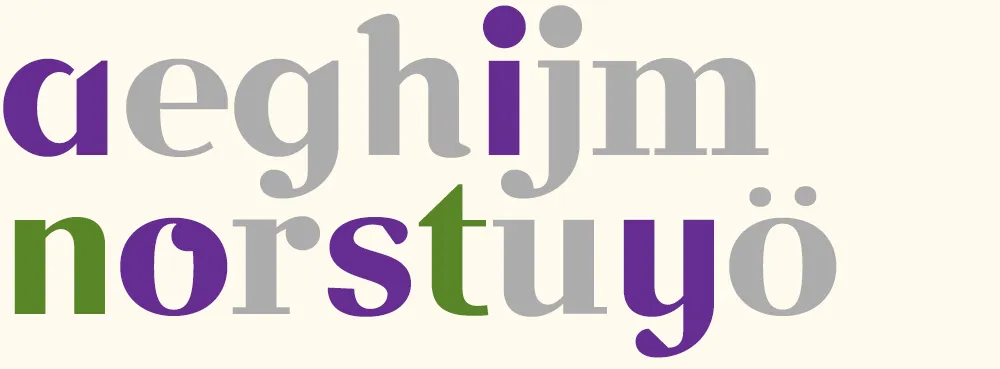
Volley 7: “faster!” I change the style again, albeit in an expeditious manner, by slanting all the glyphs. I add an f and a ! and tweak a few existing glyphs. (Merely slanted glyphs are shown in light purple.)
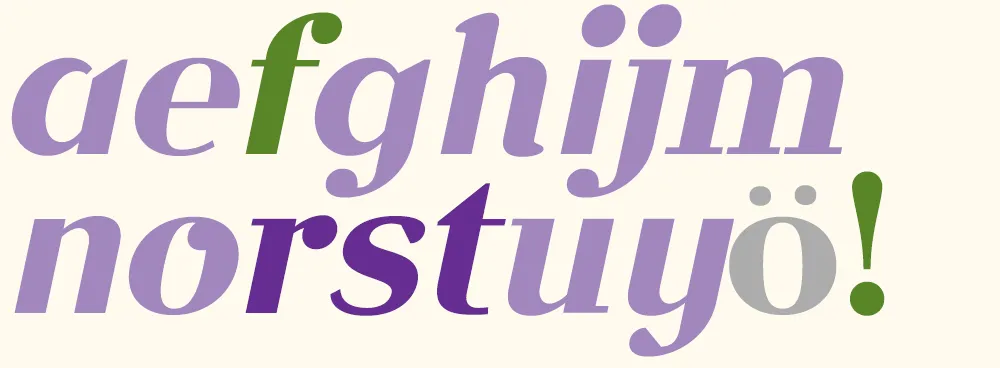
Volley 8: “aefghijm” Peter does something “meta” by printing out and critiquing an unslanted version of font.
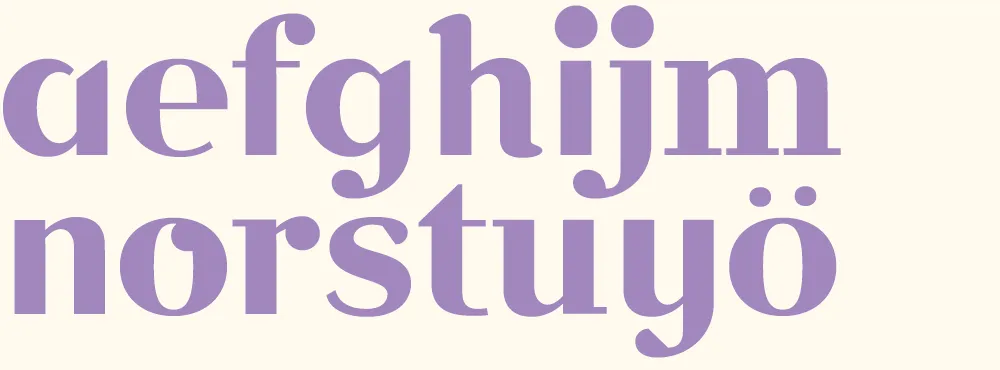
Volley 9: “redesign” I discard my cheap slanting trick from volley 7 and, starting from the font in volley 6, change it into a slab serif for my final volley.
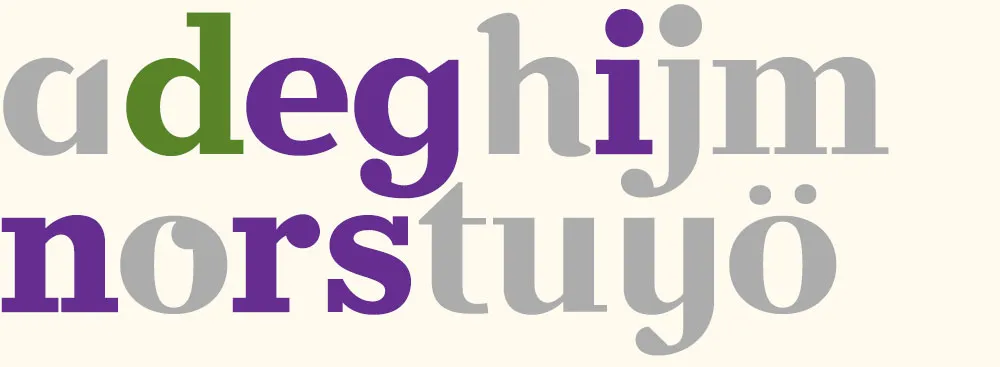
Volley 10: “bye!” Peter takes my slanted font from volley 7 and gives it a more cursive flair, with a reprise of the Coquette reference. According to Peter, the “waving” exclamation point was a happy accident. Works for me.
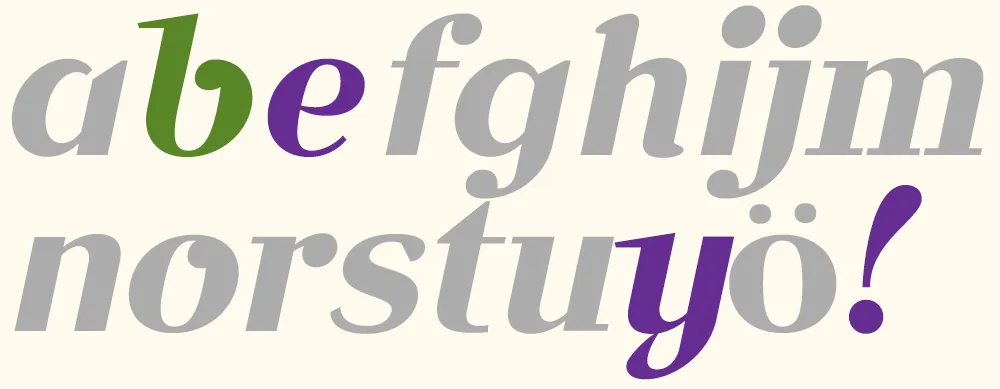
In the end, we had created ten new fonts in a few hours. Not complete, full-featured fonts, or the best-built fonts in the world, but good enough to set some type. I set them all together to show the sum of what we made:
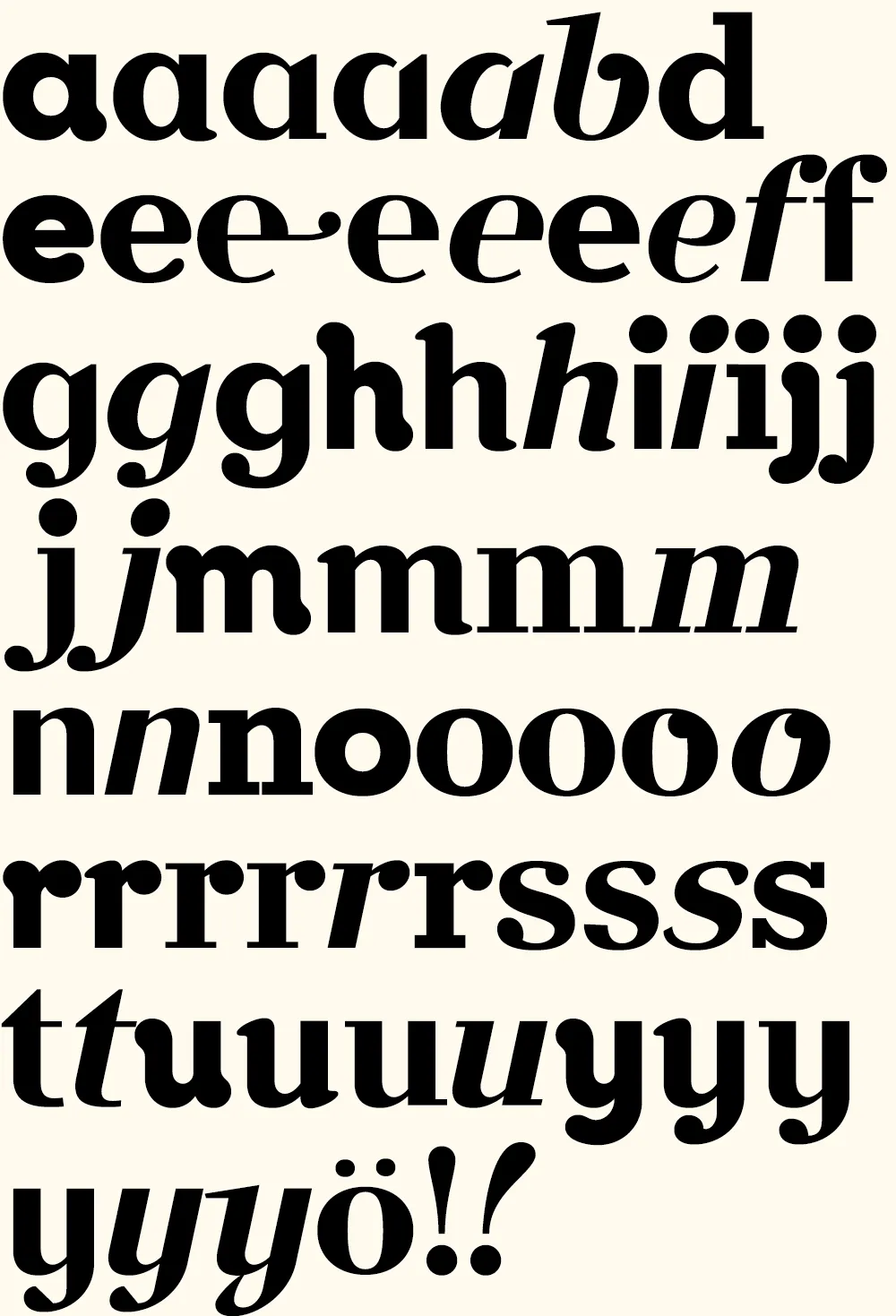
Now comes the hard part: Coming up with a name for it….
(Thanks to Peter Bruhn, and Jim Coudal and Bryan Bedell of Coudal Partners.)
[ ]
]
Just a note to say, this Friday afternoon, I’ll be pitting my type chops against (with?) fellow type designer Peter Bruhn for a “exhibition” game of Layer Tennis. I expect this to be a friendly match, more improvisational than competitive. But we’ll see.
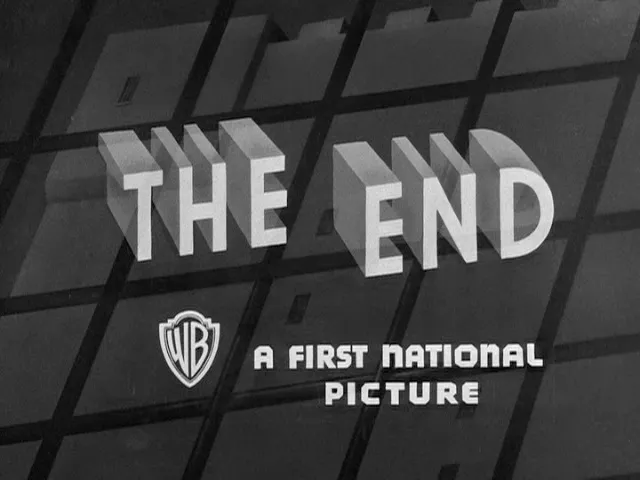
Appropriately enough for the end of the year, the Movie Title Stills Collection now has a set of “The End” titles from Warner Bros. movies, from 1925 (the earliest available on DVD) to 1967 (when the practice ended). As usual, these are nearly all hand lettered. There is some consistency to the designs, almost as if it were treated as logos. This may have been done on purpose, as a way of branding the pictures, but it seems more likely that is was simple expediency, reusing the same artwork to save time and money, with variations reflecting the shifting tastes over time of the artists involved.
I was quoted and my site was mentioned in an article by Alice Rawsthorn in today’s New York Times. If you’ve come here looking for my Mad Men piece, it’s here:
Titanic was also mentioned:
For more obsessive nitpicking about type in movies and television (more fun than it sounds), see Son of Typecasting.
